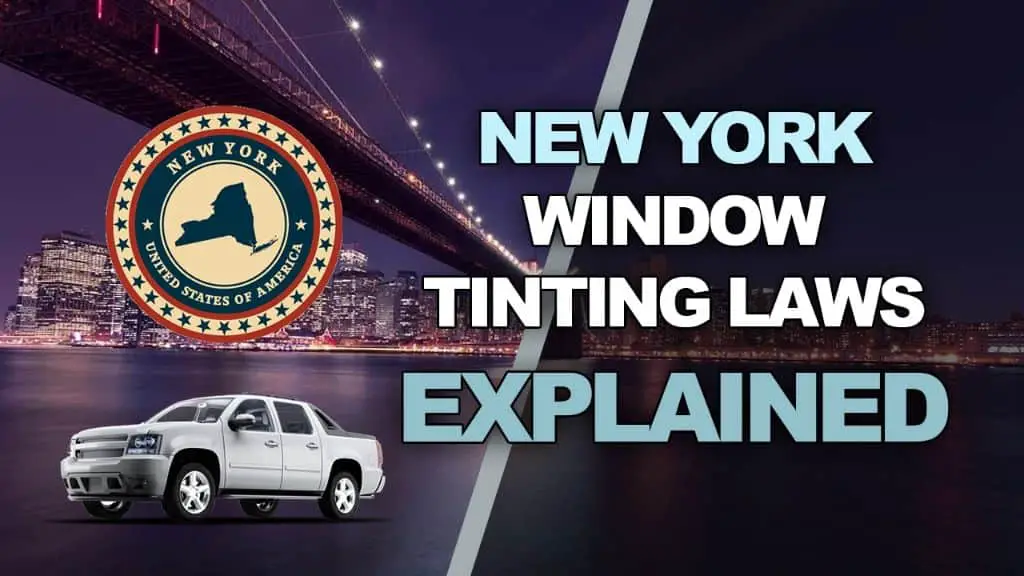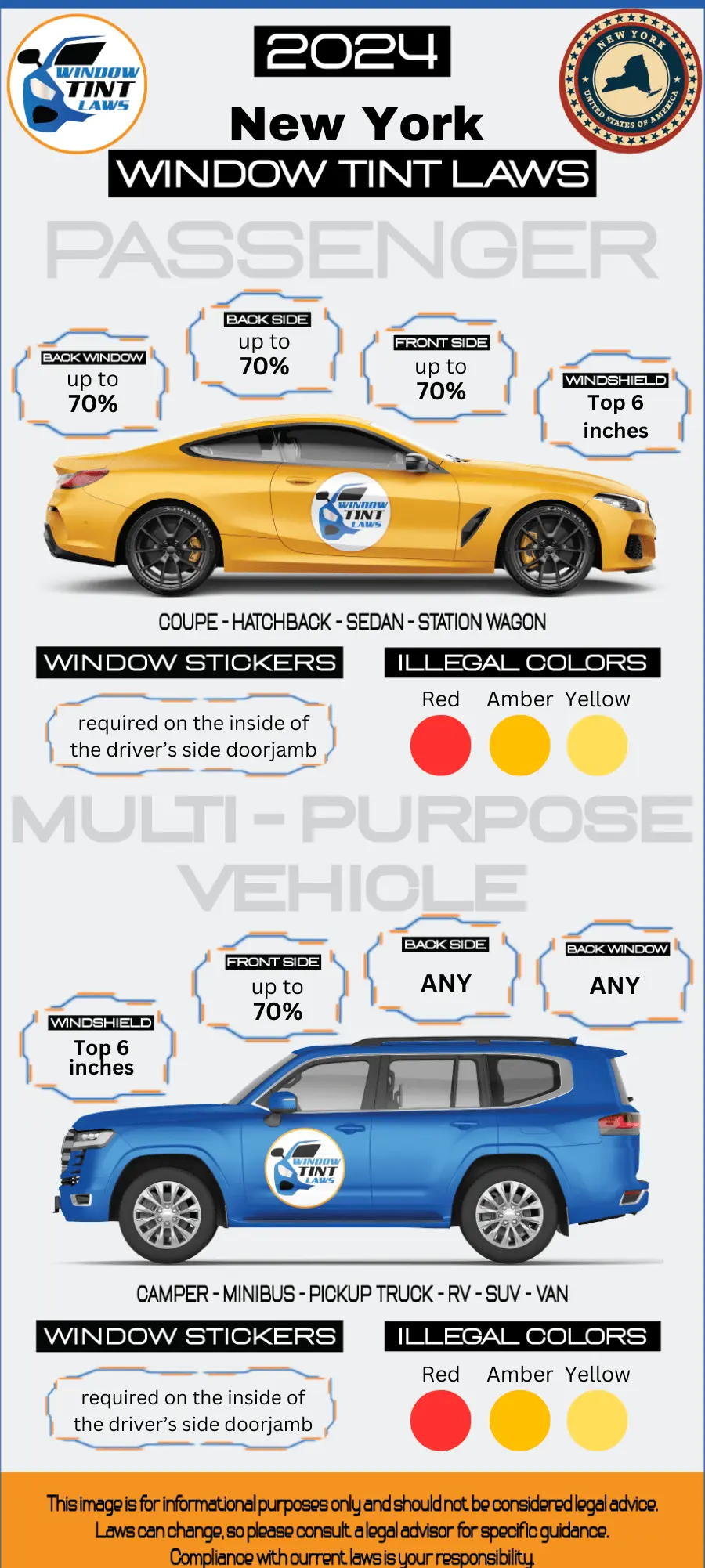

Article Created by Ryan Pietrzak
Last updated on February 14, 2024New York Tint Laws – 2024 Updated Legal Tint Limit
Please note that New York Tint Laws Regulation can change daily and may be interpreted differently at the city or county level. We recommend verifying this information with your local DMV or law enforcement agencies. We have manually fact-checked this content using official state resources. New York enacted tinting laws in 1991. If any information provided is incorrect or outdated, please contact us so we can make the necessary corrections. Thank you.
2024 New York Tint Laws – Legal Tint Limit For Passenger Vehicles
- Front Windshield: Non-reflective tint is allowed on the top 6 inches of the windshield.
- Front seat side windows: up to 70% tint darkness allowed. Front side windows must allow at least 70% light transmission, restricting tint to 30% or lighter.
- Back seat side windows: up to 70% tint darkness allowed
- Rear window: up to 70% tint darkness allowed
2024 New York Tint Laws – Legal Tint Limit For Multi-Purpose Vehicles
- Front Windshield: Non-reflective tint is allowed on the top 6 inches of the windshield.
- Front seat side windows: up to 70% tint darkness allowed
- Back seat side windows: Any tint darkness can be used
- Rear window: Any tint darkness can be used

- Medical exemptions: New York tint laws permit darker tints on front side windows with a doctor’s note
- New York tint laws prohibit metallic or reflective tint on any of the windows
- New York tint laws are statewide with no additional local regulations
- Violating New York tint laws can result in fines from $25 up to $150 per window.
What does VLT Mean according to New York Tint Laws?
- Window tint film’s light transmission is measured as VLT (Visible Light Transmission) and each state has its own legal limits for VLT on car windows.
- A HIGHER VLT means that more light is allowed to pass through the window tint film.
- Example: a 75% tint will allow 75% of the light to pass through whereas a 5% tint will only allow 5% of the light to pass through, making the 5% tint a much darker film.
- New York window tint laws has specific VLT limits for Passenger Vehicles and Multi-Purpose Vehicles.
FAQ’s Regarding New York Tint Laws and New York Legal Tint Limit
What is the darkest legal tint in New York?
In New York, the darkest legal window tint allowed is 70 percent Visible Light Transmission (VLT) for all windows, with specific conditions for the windshields. This means that the window film must let at least 70 percent of the light pass through. However, the top 6 inches of the windshield can be tinted with any level of darkness, provided it is non-reflective.
Are police exempt from window tint laws in New York?
In New York, law enforcement vehicles are often subject to different regulations regarding window tinting compared to civilian vehicles. These exemptions usually allow police vehicles to have darker tints for operational reasons, although specific details about these exemptions for New York are not explicitly mentioned in the general window tinting laws.
How do I get a tint waiver in New York?
To obtain a tint waiver in New York, individuals with specific medical conditions need a Medical Exemption report signed by a physician or optometrist, indicating why darker tints are necessary. This process is overseen by the New York Department of Motor Vehicles (DMV) and is generally reserved for health-related needs.
How much is a tint ticket in New York?
In New York, a window tint ticket can cost between $150 to $400, with additional surcharges bringing the total fine to approximately $230-$550. The cost of the ticket may depend on factors like the severity of the tint violation and whether it is a first or subsequent offense.
Can you get pulled over for tint in New York?
Yes, you can get pulled over for having window tint in New York if the tint is darker than the state’s legal limit. New York has strict window tint laws, and non-compliance can result in being stopped by law enforcement and potentially fined. The legal limit for window tint in New York allows a minimum of 70% light transmittance. Driving with tint that blocks more light than this limit could lead to a traffic stop and a citation.
How to get a Tint Exemption in New York
Latest New York Health department regulations updated in December 2017 include the following medical conditions: albinism, chronic actinic dermatitis/actinic reticuloid, dermatomyositis, lupus erythematosus, porphyria, xeroderma (pigmentosa) pigmentosum, severe drug photosensitivity, photophobia, or any other condition or disorder causing severe photosensitivity in which the individual is required for medical reasons to be shielded from the direct rays of the sun.
For more information regarding window tint medical exemptions in _____ you can check out this resource:
- New York DMV – Tinted windows FAQ
- New York DMV – Application for tinted window exemption (.pdf file; form MV-80W)

Ryan Pietrzak
Creator of Windowtintlaws.us
